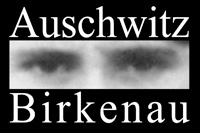




Hospitals
A so-called “sick bay” was the starting point for the hospital in Auschwitz I. It was set up in June 1940, immediately after the opening of the camp. In the years to come, hospitals were also created in Birkenau (among others in the part of the women's camp BI a and in the camp BII f), as well as in Monowitz and several of the larger sub‑camps.
The overcrowding of hospital rooms caused high mortality. Living conditions in the camp were such that prisoners quickly came down with various illnesses. Colds, pneumonia, and frostbite were common in winter. Brutal treatment by SS men and functionaries resulted in broken limbs and damage to muscles. Because of vitamin insufficiency and contagion, prisoners came down with boils, abscesses, and ulceration. Starvation sickness was common (Muselmann). The hospital crawled with fleas and lice, and rats were an additional plague in Birkenau.
From the second half of 1942, in connection with the threat of typhus and the increased need for labor power, the SS leadership decided to take steps to improve conditions in the hospitals. Selections, conducted by SS doctors until November 1944, nevertheless represented a constant danger to anyone in the hospital. All sick prisoners were originally subject to selection, but after mid‑1943 it was confined to Jews.
